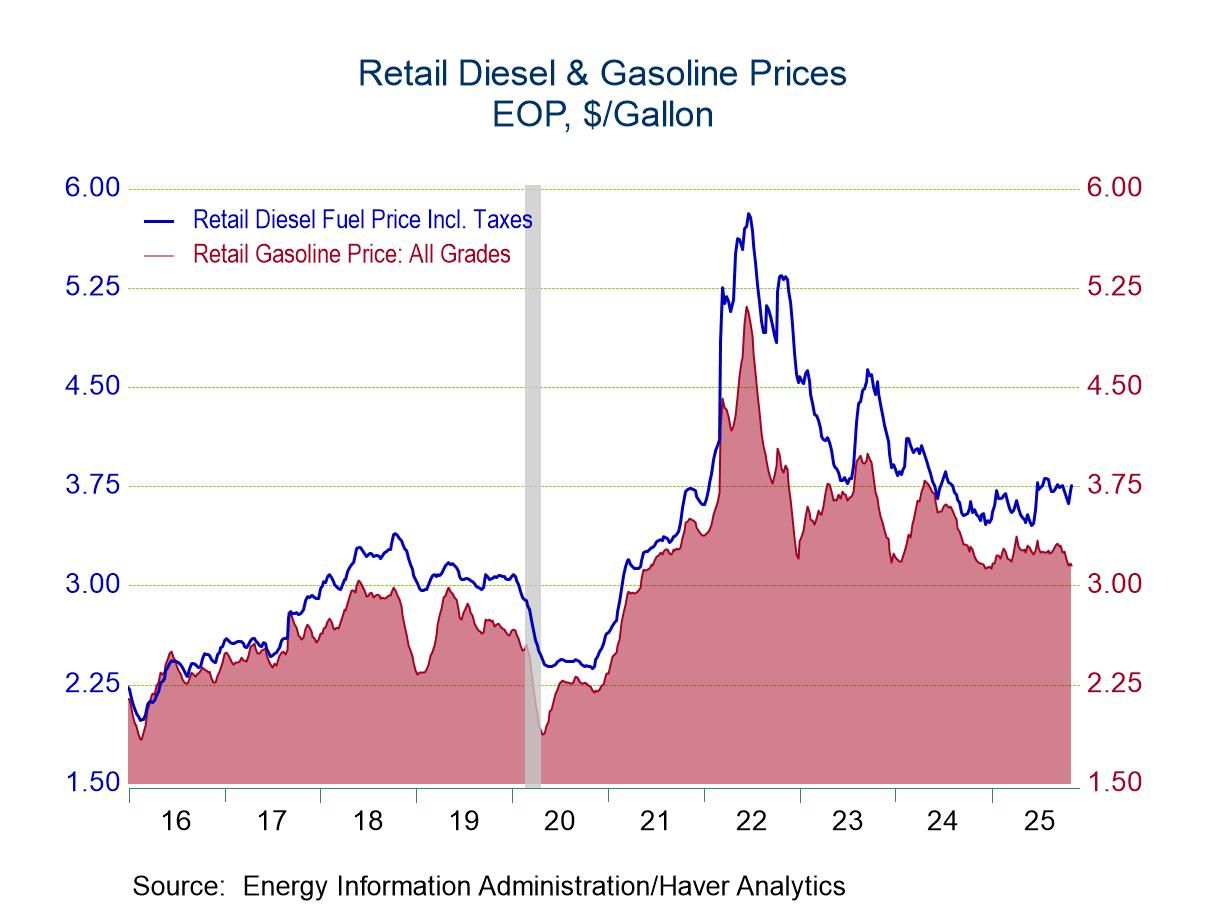 Global| Jun 12 2008
Global| Jun 12 2008EMU Area IP Growth Confirms the Strength Across Countries
Summary
In April EMU-wide industrial output rose by 0.3% but that was after a drop of 0.6% in March. While the Yr/Yr growth rate seems a lot higher at 2.9% in April compared to 1.4% in March, growth is actually fading. The monthly gain in [...]

In April EMU-wide industrial output rose by 0.3% but that was after a drop of 0.6% in March. While the Yr/Yr growth rate seems a lot higher at 2.9% in April compared to 1.4% in March, growth is actually fading. The monthly gain in April does not make up for the weakness in March. As a result the quarter to date growth in EMU-wide IP is running at a negative rate of 0.3%, a slight annual rate decline in 2008-Q2.
Consumer goods output is dropping at -0.5% annual rate clearly the weak sector in 2008-Q2, despite a sharp gain of 1.7% in April. Intermediate goods output is nearly flat and has been choppy in recent months. Capital goods output remains as it has been, the driver of industrial growth, rebounding sharply by 2% in April after a 1.6% drop in March and growing at a 6.5% annual rate in 2008-Q2.
The chart on the left shows that this month’s rebound in output comes in the face of a clear declining trend for output of consumer and intermediate goods. For capital goods the trend is not clear except that this month’s sharp gain arrests, for at least one month, what had seemed to be the onset of a declining trend there. Instead, all we can say is that capital goods output has become very volatile. This has come at a time that weather effects and the calendar placement of Easter have been beneficial to the euro-economy. So if these sorts of ephemeral factors are responsible for the monthly rebound we could see the onset of true trend and weaker growth in the months ahead.
| Euro Area MFG IP | ||||||||||
|---|---|---|---|---|---|---|---|---|---|---|
| SAAR except m/m | Mo/Mo | Apr 08 |
Mar 08 |
Apr 08 |
Mar 08 |
Apr 08 |
Mar 08 |
|||
| Euro Area Detail | Apr 08 |
Mar 08 |
Feb 08 |
3Mo | 3Mo | 6mo | 6mo | 12mo | 12mo | Q-2- Date |
| MFG | 0.3% | -0.6% | 0.1% | -0.7% | 3.0% | 1.6% | 2.2% | 2.9% | 1.4% | -0.3% |
| Consumer | 0.4% | -0.6% | -0.4% | -2.1% | -0.4% | -0.3% | -0.8% | 0.6% | -1.1% | -0.5% |
| C-Durables | 1.7% | -1.6% | -0.1% | -0.1% | 1.2% | -0.3% | -3.4% | 1.1% | -3.2% | |
| C-Nondurables | 0.2% | -0.5% | -0.4% | -2.4% | -0.6% | -0.1% | -0.4% | 0.6% | -0.6% | |
| Intermediate | 0.3% | -0.5% | 0.3% | 0.1% | 2.1% | 1.2% | 1.9% | 2.5% | 0.6% | 0.1% |
| Capital | 2.0% | -1.6% | 0.5% | 3.4% | 5.9% | 6.0% | 4.0% | 7.5% | 3.6% | 6.5% |
Robert Brusca
AuthorMore in Author Profile »Robert A. Brusca is Chief Economist of Fact and Opinion Economics, a consulting firm he founded in Manhattan. He has been an economist on Wall Street for over 25 years. He has visited central banking and large institutional clients in over 30 countries in his career as an economist. Mr. Brusca was a Divisional Research Chief at the Federal Reserve Bank of NY (Chief of the International Financial markets Division), a Fed Watcher at Irving Trust and Chief Economist at Nikko Securities International. He is widely quoted and appears in various media. Mr. Brusca holds an MA and Ph.D. in economics from Michigan State University and a BA in Economics from the University of Michigan. His research pursues his strong interests in non aligned policy economics as well as international economics. FAO Economics’ research targets investors to assist them in making better investment decisions in stocks, bonds and in a variety of international assets. The company does not manage money and has no conflicts in giving economic advice.






